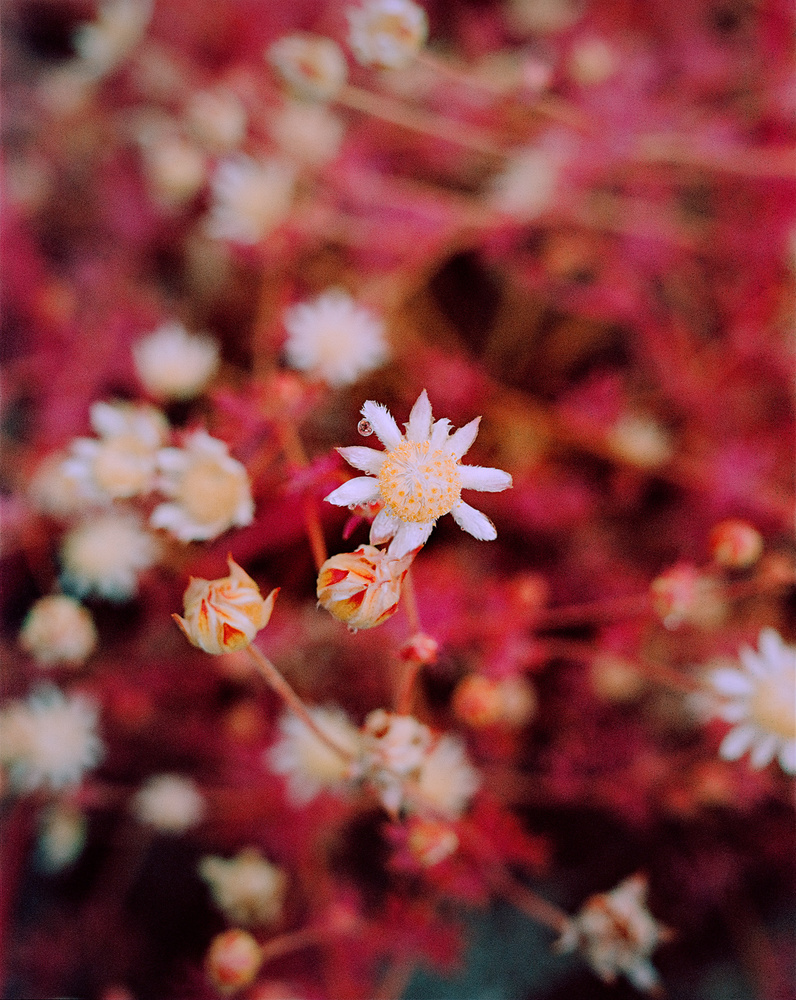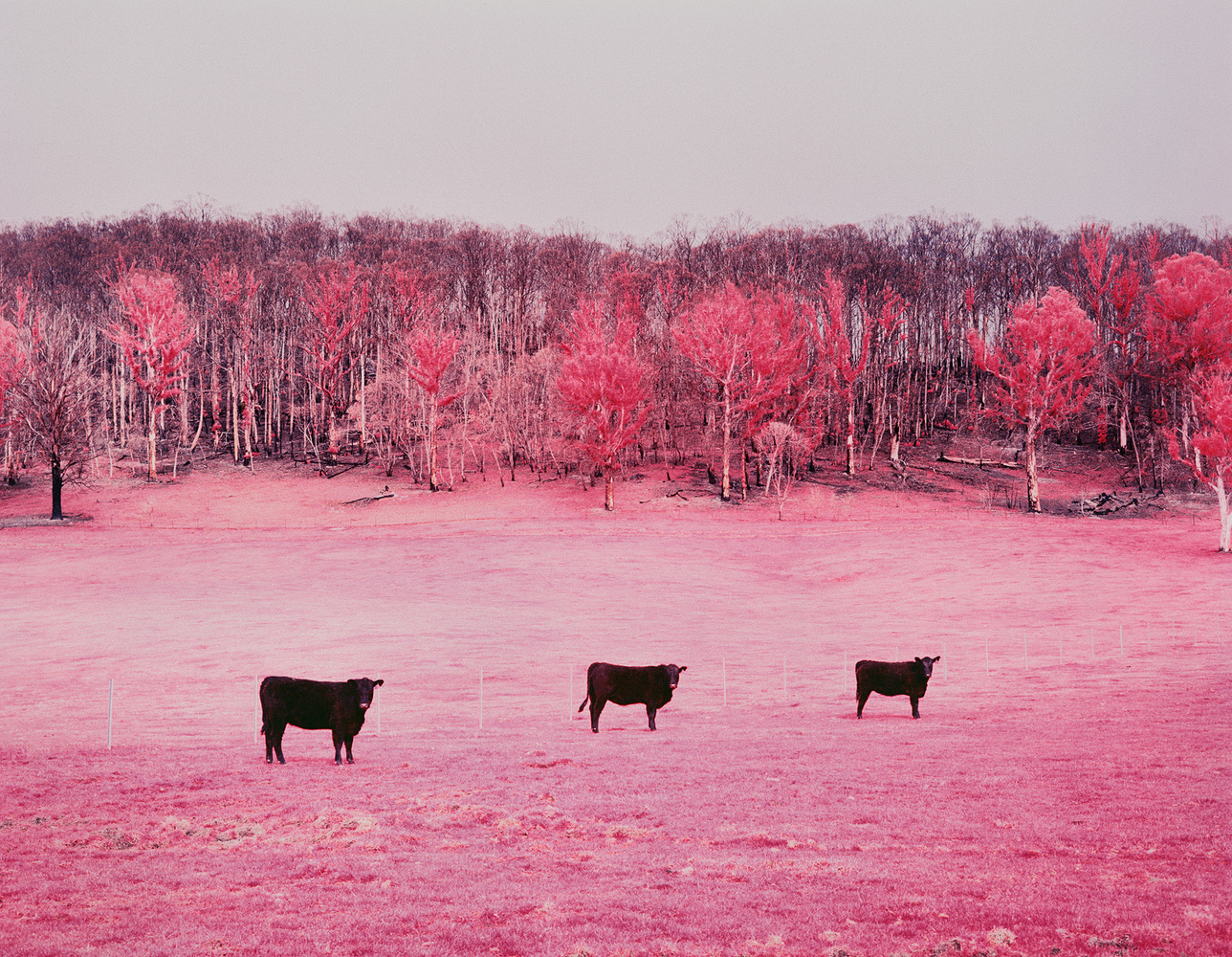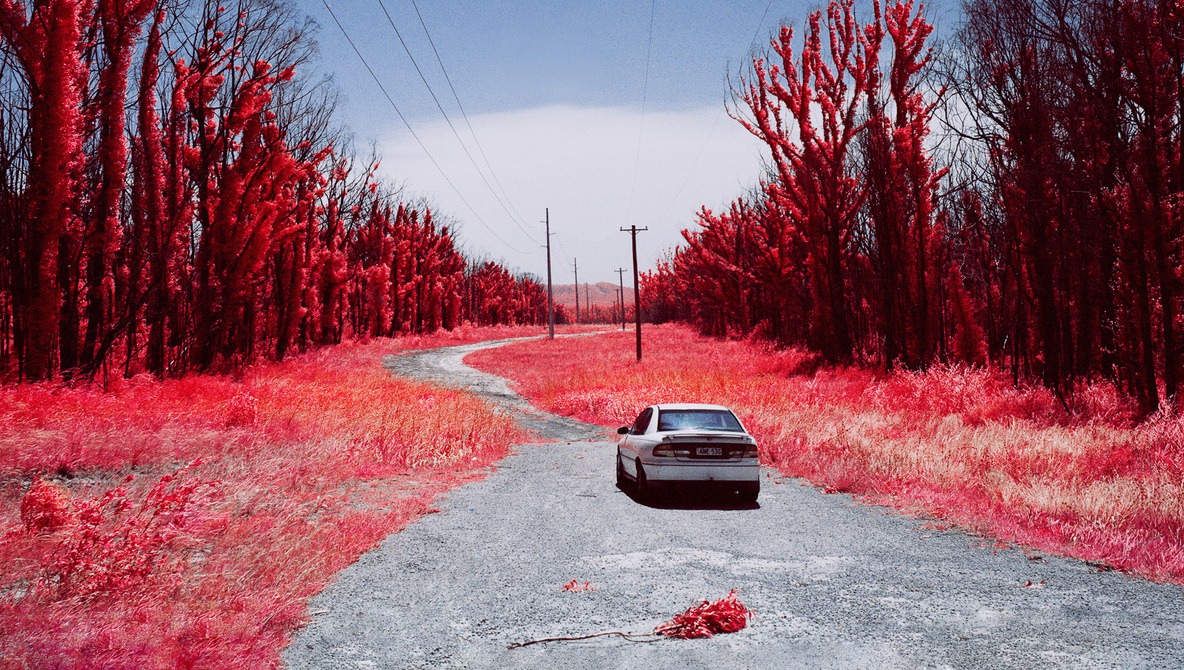Australian photographer Rob Walwyn is hosting the first exhibition of his project ‘Karrikins’ as part of Sydney's Head On Photo Festival. Karrikins documents the aftermath of the bushfires that devastated Australia’s east coast in late 2019 and early 2020. What makes Walwyn’s images even more stunning is his use of Kodak’s discontinued false-color infrared film Aerochrome.
Apocalyptic scenes of the 2019-2020 bushfire season made news around the world as vast swathes of the east coast of Australia burned. The bushfires claimed more than 72,000 square miles of land, destroyed over 5,900 buildings, and most tragically, 34 people lost their lives. The devastation was not confined to human lives either — it’s been estimated that the bushfires killed more than three billion living creatures. Yes, that’s right, three billion.

Karrikins #10 Copyright Rob Walwyn
In the aftermath of the bushfires, Sydney film photographer Rob Walwyn headed to different parts of New South Wales to capture the devastation and the regrowth that occurred soon after the bushfires. He decided to photograph what he saw using one of the few rolls of Kodak’s Aerochrome film he owned at the time.
I’d be lying if I said that the decision to shoot that first roll of Aerochrome on the bushfire regrowth was anything but an aesthetic choice. I was hoping that bright green new regrowth snaking up the trees would look beautiful on Aerochrome. It was only after I got the first rollback and received some feedback on the images that I thought this could make a really special project.
Kodak Aerochrome film is a false-color infrared film developed by Kodak in tandem with the US Military during World War Two. Originally, it was designed for aerial photography with forestry, cartography, and industrial and military applications, such as detecting enemy camouflage. With Walwyn’s Karrikins project, Kodak Aerochrome has been used with stunning results to document post-bushfire regrowth.
“Aerochrome captures the infrared light reflecting off the regrowth in lurid shades of pink and red, contrasting against the burnt and blackened trees, evoking images of the flickering flames that crept up these trees only months earlier,” explains Walwyn.

Karrikins #4 Copyright Rob Walwyn
On his first roll, he captured what he believes to be the iconic image of the series: Karrikins #1. The image shows the blackened trunks of trees, which contrasts perfectly with the bright pink regrowth of new leaves. Buoyed by this image and the encouraging results of this first roll, the Karrikins project was born.
The name of the project is a nod to the bushfire regrowth Walwyn documented through his photographs:
I studied Chemistry at Uni and when I came to read about the family of molecules known as karrikins (with etymology deriving from an Aboriginal word for smoke), that are produced during bushfires and can lead to the germination of dormant seeds of a variety of different plant species. I knew I had found the perfect name for my series.
Since that first roll of Aerochrome, Walwyn has documented the regrowth of the bush on more than 20 rolls of precious infrared film. Shooting both 120 and 35mm film, his cameras of choice have been the Pentax 67II, Mamiya 645, and Fuji TX-2 (Xpan). During my discussion with Walwyn, he talked me through some of his favorite images below.
Karrikins #1
Karrikins #1 was from his first-ever roll of Aerochrome taken in Bilpin in the Blue Mountains in March 2020. It was the first image he posted on social media shot on Aerochrome.

Karrikins #1 Copyright Rob Walwyn
The response and feedback was incredible, not just in terms of the number of likes and comments this image got, which were orders of magnitude more than an average post, but also the number of people I had messaging me asking about prints and to find out more about this film. The fact that I took this image, which is the archetypal photo of this series, on my first roll, makes it even more special to me. This image is taken on the side of Bells Line of Road, an area that was particularly devastated by the 2019-20 bushfires.
Karrikins #8
Karrikins #8 was shot in the Blue Mountains in January 2021. At first glance, this photo may not look special, pictured is an extremely rare pink flannel flower (Actinotus forsythii). The pink flannel flower can only be found in scattered parts of eastern Australia, from the Blue Mountains to northeastern Victoria.

Karrikins #8 Copyright Rob Walwyn
This flower is not endangered as a species; however, they appear so infrequently that many bushwalkers have never seen them. The flowers favor heath and open forest areas at altitudes.
The seeds can lay dormant for years on end, waiting for a special confluence of events forming the right conditions for their emergence – a year or so after bushfire followed by rainfall, which is exactly what the flower’s home turf experienced last year. When I saw pictures of these rare flowers popping up on social media, I knew it would be a perfect subject to shoot on Aerochrome for my series.
Karrikins #14
Karrikins #14 is another of Rob’s favorite images of the series to date.

Karrikins #14 Copyright Rob Walwyn
This image was taken in September 2020 in Yaouk in the Snowy Mountains of New South Wales. Only seconds after I took the photo, the light finally broke through this otherwise cloudy and rainy day and perfectly illuminated the scene with beautiful light and a nice rainbow as well - of course, I missed these beautiful lighting conditions as this was the last shot on the roll, but perhaps the cows wouldn’t have been lined up and staring at the camera moments later, so maybe it all worked out for the best anyway.
Karrikins #12
Finally, I asked Walwyn to tell me about my favorite image of the series. It shows a group of young people taking selfies and having fun in a swimming pool, while the haunting pink regrowth and blackened trees loom large behind them.

Karrikins #12 Copyright Rob Walwyn
That's also from the Snowy Mountains, from the same trip as the cow shot. The swimming pool is thermal - naturally 26 degrees all year round. It must be pretty nice to visit the pool in winter when it's freezing. I saw an image of this pool on social media and the fact that it had these beautiful trees in the background and the mountains were ravaged by bushfires, contrasting with people frolicking in the pool and having fun, that's what made this image special for me.
Visit the Karrikins Exhibition
These are just some of the hundreds of stunning infrared photos Walwyn has taken using Aerochrome for the Karrikins project. He has meticulously whittled down the images to just 17 for his first exhibition 'Karrikins' taking place from November 24-28 at the Barometer Gallery in Paddington, Sydney. The exhibition is part of Sydney’s Head On Photo Festival, which is taking place at dozens of galleries and outdoor spaces across the Emerald City until November 28. The festival also features workshops and panel discussions.
Images used with permission of Rob Walwyn.






